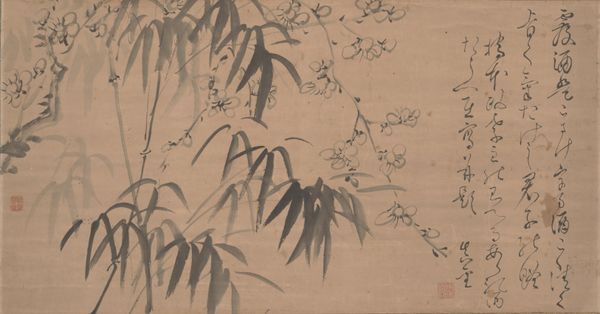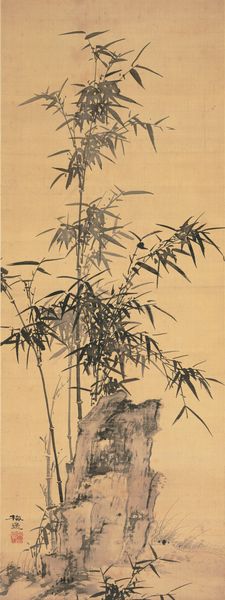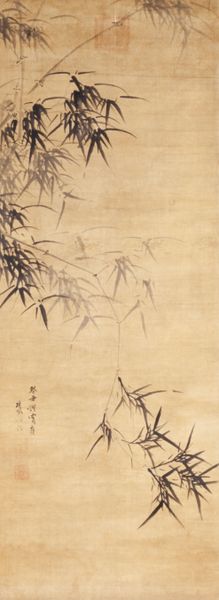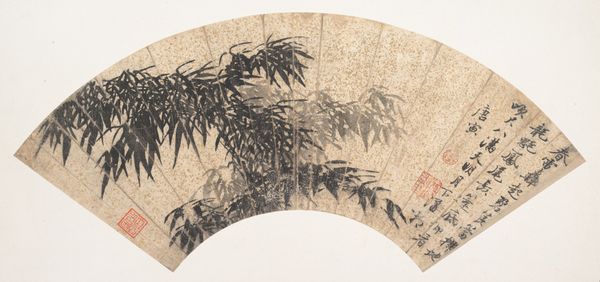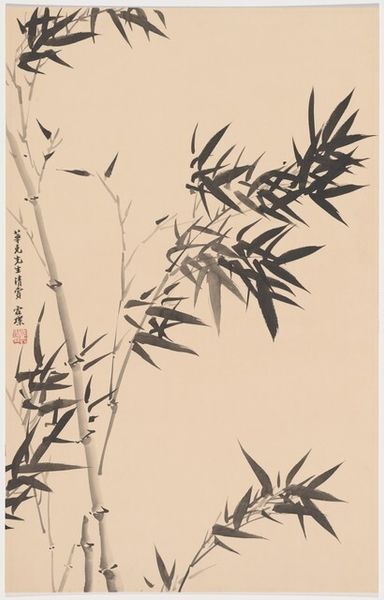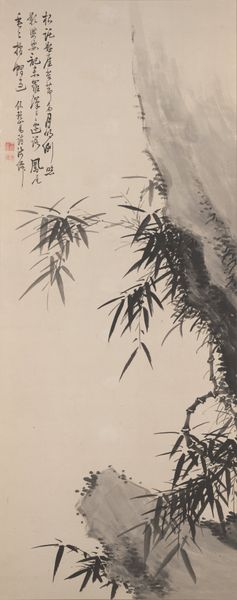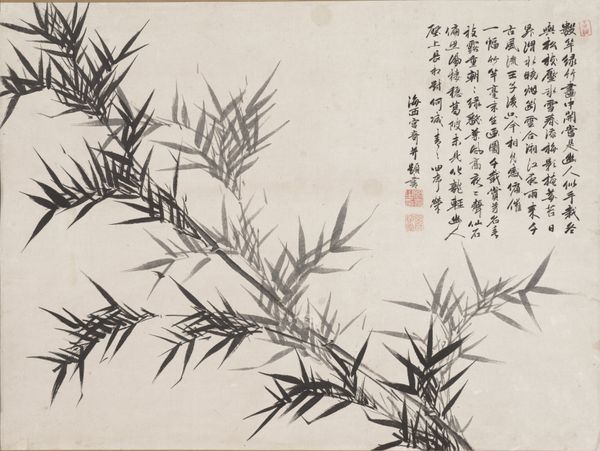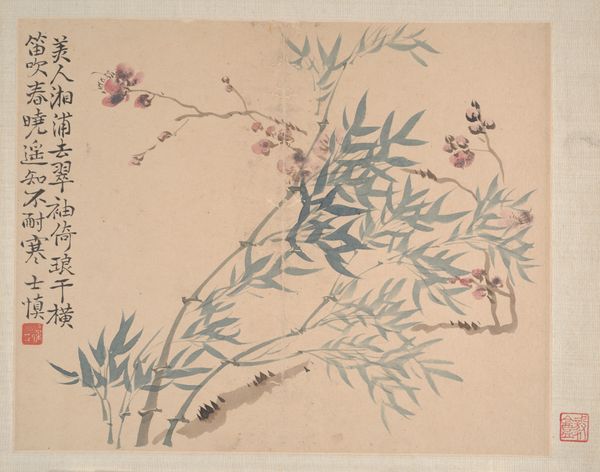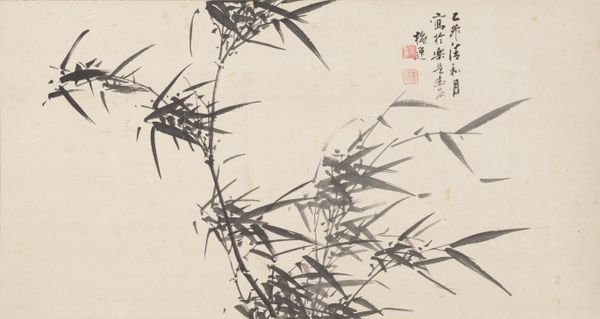
drawing, paper, ink-on-paper, hanging-scroll, ink
#
drawing
#
asian-art
#
landscape
#
japan
#
paper
#
ink-on-paper
#
hanging-scroll
#
ink
#
orientalism
#
line
#
calligraphy
Dimensions: 51 11/16 × 11 1/4 in. (131.29 × 28.58 cm) (image)72 13/16 × 16 3/16 in. (184.94 × 41.12 cm) (mount)
Copyright: Public Domain
Editor: Here we have "Southern Mountain Bamboo," an ink on paper hanging scroll from 1822 by Ema Saikō. It’s at the Minneapolis Institute of Art. The delicate brushstrokes create such a tranquil mood. What do you see in this piece from a formalist perspective? Curator: The reduction of form is striking. Saikō utilizes ink in varying concentrations, creating depth and spatial recession on a flat plane. Note the contrast between the precisely delineated leaves and the ethereal quality of the bamboo fading into the distance. How does this interplay affect your perception of the work? Editor: It’s interesting. The sharp details in the foreground feel very present and real, while the fading background almost becomes dreamlike, like a memory. Is there significance in the composition, with the calligraphy at the top and the bamboo stretching vertically? Curator: Indeed. The calligraphy anchors the work and introduces a layer of intellectual engagement. Consider the calligraphic lines—their texture, rhythm, and weight. The verticality emphasizes the bamboo's growth and resilience, becoming almost a visual metaphor for the artist's own striving for artistic expression. It demonstrates a delicate balance of yin and yang. Editor: So, the form itself conveys meaning, rather than relying on outside stories or symbolism? Curator: Precisely. It is the intrinsic elements—the brushwork, the composition, the deployment of ink—that communicate most powerfully. External narratives can be supplementary, but the art itself is self-referential and requires contemplation on its own materiality. Editor: I hadn't thought about it that way. It makes me appreciate the skill and the intention behind each mark even more. Curator: It’s rewarding to dissect art and learn to see how different elements interact to produce aesthetic impact. The simplicity is so deliberate and impactful.
Comments
minneapolisinstituteofart almost 2 years ago
⋮
Ema Saikō, a leading literatus of her time, was particularly known for her bamboo paintings. In emulation of Chinese models, space and form are suggested through the layering of precise brush strokes in graded intensities of ink. The precision and crispness of her brushstrokes create a clean and well-ordered elegance despite the complexity of the composition. Although women were generally held a low position in Edo-period society, there were a number of prominent female artists, poets, and calligraphers.
Join the conversation
Join millions of artists and users on Artera today and experience the ultimate creative platform.

